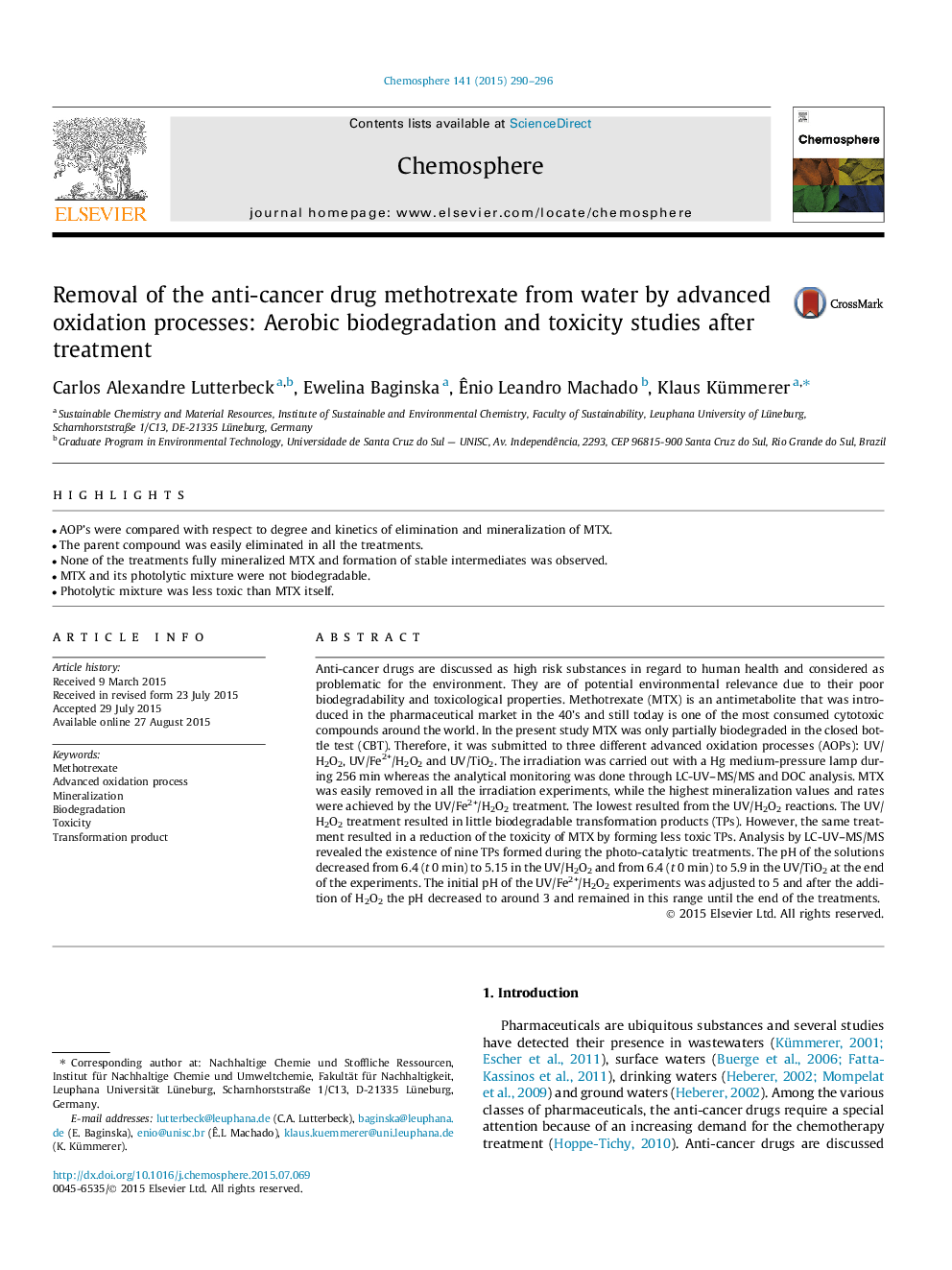| Article ID | Journal | Published Year | Pages | File Type |
|---|---|---|---|---|
| 6307393 | Chemosphere | 2015 | 7 Pages |
â¢AOP's were compared with respect to degree and kinetics of elimination and mineralization of MTX.â¢The parent compound was easily eliminated in all the treatments.â¢None of the treatments fully mineralized MTX and formation of stable intermediates was observed.â¢MTX and its photolytic mixture were not biodegradable.â¢Photolytic mixture was less toxic than MTX itself.
Anti-cancer drugs are discussed as high risk substances in regard to human health and considered as problematic for the environment. They are of potential environmental relevance due to their poor biodegradability and toxicological properties. Methotrexate (MTX) is an antimetabolite that was introduced in the pharmaceutical market in the 40's and still today is one of the most consumed cytotoxic compounds around the world. In the present study MTX was only partially biodegraded in the closed bottle test (CBT). Therefore, it was submitted to three different advanced oxidation processes (AOPs): UV/H2O2, UV/Fe2+/H2O2 and UV/TiO2. The irradiation was carried out with a Hg medium-pressure lamp during 256Â min whereas the analytical monitoring was done through LC-UV-MS/MS and DOC analysis. MTX was easily removed in all the irradiation experiments, while the highest mineralization values and rates were achieved by the UV/Fe2+/H2O2 treatment. The lowest resulted from the UV/H2O2 reactions. The UV/H2O2 treatment resulted in little biodegradable transformation products (TPs). However, the same treatment resulted in a reduction of the toxicity of MTX by forming less toxic TPs. Analysis by LC-UV-MS/MS revealed the existence of nine TPs formed during the photo-catalytic treatments. The pH of the solutions decreased from 6.4 (t 0Â min) to 5.15 in the UV/H2O2 and from 6.4 (t 0Â min) to 5.9 in the UV/TiO2 at the end of the experiments. The initial pH of the UV/Fe2+/H2O2 experiments was adjusted to 5 and after the addition of H2O2 the pH decreased to around 3 and remained in this range until the end of the treatments.
